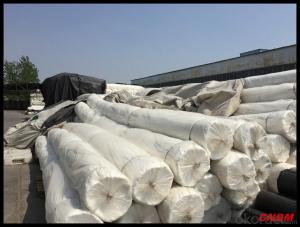Civil engineering and environmental projects have changed forever due to geotextiles. They are versatile materials that are designed for filtration, drainage, reinforcement and separation roles. Among numerous geotextile types, pot geotextile is outstanding because of its peculiar properties and uses. In this article, let us delve into the world of pot geotextile, its advantages as well as how it can be integrated in different projects to boost their performance and sustainability.
The Appeal of Pot Geotextile
Pot geotextile is a particular kind of geotextile fabric that improves the efficiency of drainage systems. It is made up of high-quality man-made fibers woven or knitted together to form an open structure. These spaces permit water but retain soil particles making it suitable for applications where water management is key.
Uses of Pot Geotextile
One primary use of pot geotextile lies in road construction and highways. When introduced into the base layer, engineers ensure good drainage which prevents accumulation of water that could lead to erosion or damage the building material structure thus increasing the life span and reducing maintenance costs.
Another application includes landscaping/gardening whereby pot geotextiles can be used to improve soil structure and enhance drainage capacities. While retaining moisture at the same time allowing excess water drain away making it possible for optimal plant growth conditions take place.. Gardeners or landscape architects appreciate that it easily works with their designs creating an improved aesthetic value as well as functionality within space.
Role Played by Pot Geotextiles in Erosion Control
Many construction sites and environmental projects face significant erosion challenges. For instance, pot geofabric forms a stable layer which protects soil from being washed down by rainwater or wind erosion. Moreover vegetation finds root on it since it has pores thus acting as an additional strengthener against erosion caused by running water.
Pot Geofabric’s Environmental Advantages
The use of pot geotextiles as an environmental choice cannot be emphasized. It is a sustainable material that can be used in any green project. Furthermore, the effective management of water and soil resources helps to conserve nature while minimizing its impact on the ecosystem. Additionally, this is a product that can serve for many years without being replaced hence reducing waste as well as manufacturing new materials with high carbon print.
Pot Geotextile Installation and Maintenance
Installation of pot geotextiles is simple because it requires few tools and less skill. The fabric can easily be cut into needed sizes and spread out over the chosen area. Also, it does not get damaged by UV rays, microorganisms or chemicals making its maintenance straightforward. This means that after installation there is no need for maintenance activities on it thus creating a low-cost solution that is both efficient and highly productive.
What’s Next For Pot Geofabric?
Pot geotextile has a bright future ahead of itself. With rising awareness about environmental issues coupled with increasing demand for sustainable building practices, pot geofabric stands out as one of the key products which will be seen everywhere in this sector sooner than later. Engineers, architects and environmentalists alike find it appealing due to its versatility and efficacy in different applications.
Conclusion
Pot geotextile is an amazing product with numerous advantages for many uses. Examples include its use in roads to improve drainage, support erosion control measures and facilitate environmental conservation efforts. Pot geotextiles prove the strides that have been made in material science to achieve better infrastructure and environmental protection. In this regard, as the world seeks solutions for a resilient future amidst climate change, pot geotextile will surely be of great importance.





